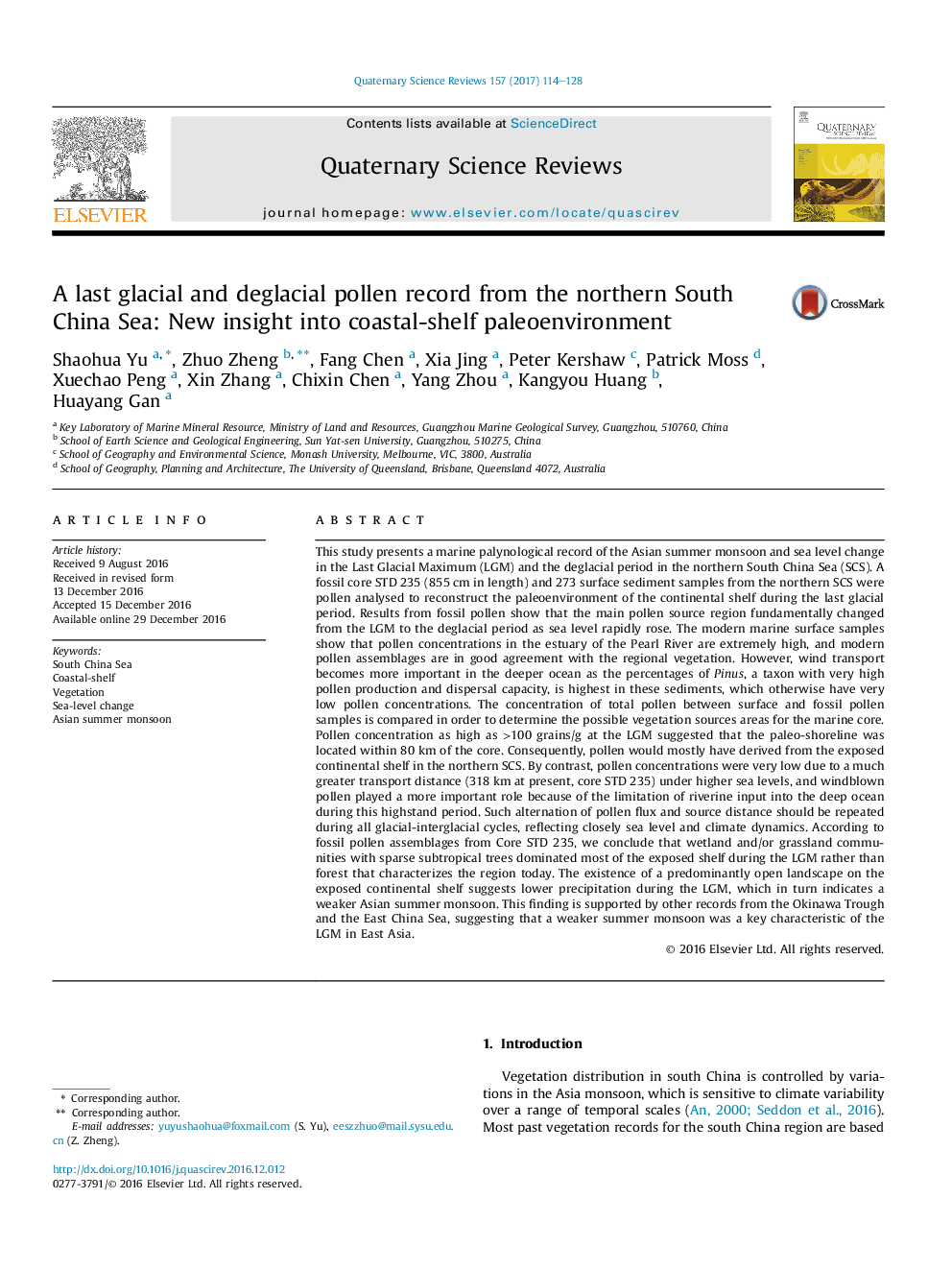| کد مقاله | کد نشریه | سال انتشار | مقاله انگلیسی | نسخه تمام متن |
|---|---|---|---|---|
| 5786859 | 1640778 | 2017 | 15 صفحه PDF | دانلود رایگان |
- First study to provide a detailed coverage of surface pollen samples in the northeastern SCS.
- Demonstration that the source of marine pollen has changed significantly between the glacial and deglacial periods.
- Shows that grassland/wetland vegetation with sparse subtropical trees dominated the exposed shelf during the LGM.
- Increased herbs on the exposed continental shelf during the LGM demonstrate the decreasing impact of Asian summer monsoon.
This study presents a marine palynological record of the Asian summer monsoon and sea level change in the Last Glacial Maximum (LGM) and the deglacial period in the northern South China Sea (SCS). A fossil core STD 235 (855 cm in length) and 273 surface sediment samples from the northern SCS were pollen analysed to reconstruct the paleoenvironment of the continental shelf during the last glacial period. Results from fossil pollen show that the main pollen source region fundamentally changed from the LGM to the deglacial period as sea level rapidly rose. The modern marine surface samples show that pollen concentrations in the estuary of the Pearl River are extremely high, and modern pollen assemblages are in good agreement with the regional vegetation. However, wind transport becomes more important in the deeper ocean as the percentages of Pinus, a taxon with very high pollen production and dispersal capacity, is highest in these sediments, which otherwise have very low pollen concentrations. The concentration of total pollen between surface and fossil pollen samples is compared in order to determine the possible vegetation sources areas for the marine core. Pollen concentration as high as >100 grains/g at the LGM suggested that the paleo-shoreline was located within 80 km of the core. Consequently, pollen would mostly have derived from the exposed continental shelf in the northern SCS. By contrast, pollen concentrations were very low due to a much greater transport distance (318 km at present, core STD 235) under higher sea levels, and windblown pollen played a more important role because of the limitation of riverine input into the deep ocean during this highstand period. Such alternation of pollen flux and source distance should be repeated during all glacial-interglacial cycles, reflecting closely sea level and climate dynamics. According to fossil pollen assemblages from Core STD 235, we conclude that wetland and/or grassland communities with sparse subtropical trees dominated most of the exposed shelf during the LGM rather than forest that characterizes the region today. The existence of a predominantly open landscape on the exposed continental shelf suggests lower precipitation during the LGM, which in turn indicates a weaker Asian summer monsoon. This finding is supported by other records from the Okinawa Trough and the East China Sea, suggesting that a weaker summer monsoon was a key characteristic of the LGM in East Asia.
Journal: Quaternary Science Reviews - Volume 157, 1 February 2017, Pages 114-128
